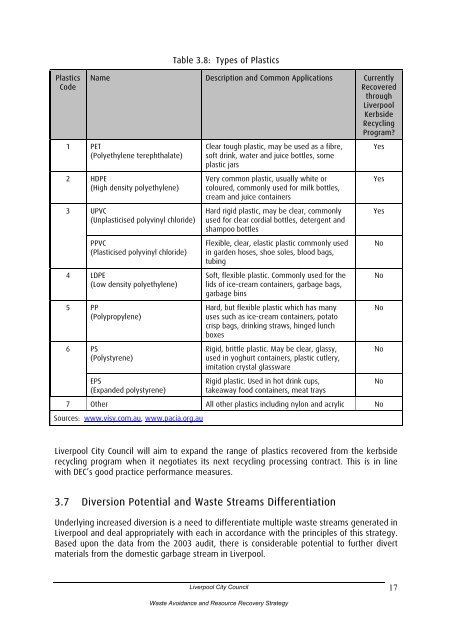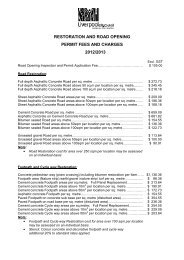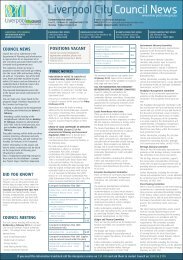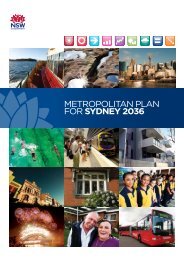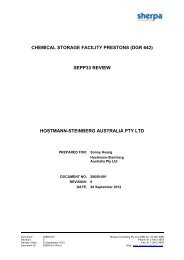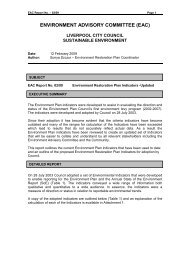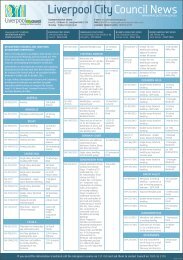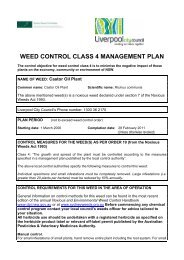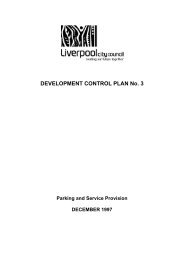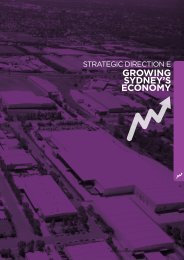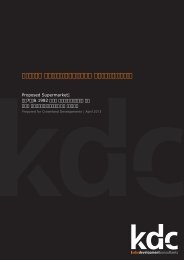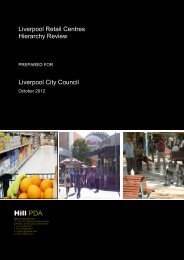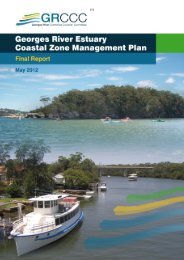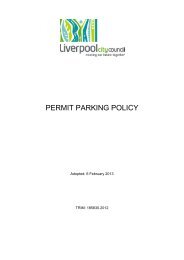to view the WARR Strategy. - Liverpool City Council - NSW ...
to view the WARR Strategy. - Liverpool City Council - NSW ...
to view the WARR Strategy. - Liverpool City Council - NSW ...
You also want an ePaper? Increase the reach of your titles
YUMPU automatically turns print PDFs into web optimized ePapers that Google loves.
PlasticsCodeTable 3.8: Types of PlasticsName Description and Common Applications CurrentlyRecoveredthrough<strong>Liverpool</strong>KerbsideRecyclingProgram?1 PET(Polyethylene terephthalate)2 HDPE(High density polyethylene)3 UPVC(Unplasticised polyvinyl chloride)PPVC(Plasticised polyvinyl chloride)4 LDPE(Low density polyethylene)5 PP(Polypropylene)6 PS(Polystyrene)EPS(Expanded polystyrene)Clear <strong>to</strong>ugh plastic, may be used as a fibre,soft drink, water and juice bottles, someplastic jarsVery common plastic, usually white orcoloured, commonly used for milk bottles,cream and juice containersHard rigid plastic, may be clear, commonlyused for clear cordial bottles, detergent andshampoo bottlesFlexible, clear, elastic plastic commonly usedin garden hoses, shoe soles, blood bags,tubingSoft, flexible plastic. Commonly used for <strong>the</strong>lids of ice-cream containers, garbage bags,garbage binsHard, but flexible plastic which has manyuses such as ice-cream containers, pota<strong>to</strong>crisp bags, drinking straws, hinged lunchboxesRigid, brittle plastic. May be clear, glassy,used in yoghurt containers, plastic cutlery,imitation crystal glasswareRigid plastic. Used in hot drink cups,takeaway food containers, meat trays7 O<strong>the</strong>r All o<strong>the</strong>r plastics including nylon and acrylic NoSources: www.visy.com.au, www.pacia.org.auYesYesYesNoNoNoNoNo<strong>Liverpool</strong> <strong>City</strong> <strong>Council</strong> will aim <strong>to</strong> expand <strong>the</strong> range of plastics recovered from <strong>the</strong> kerbsiderecycling program when it negotiates its next recycling processing contract. This is in linewith DEC’s good practice performance measures.3.7 Diversion Potential and Waste Streams DifferentiationUnderlying increased diversion is a need <strong>to</strong> differentiate multiple waste streams generated in<strong>Liverpool</strong> and deal appropriately with each in accordance with <strong>the</strong> principles of this strategy.Based upon <strong>the</strong> data from <strong>the</strong> 2003 audit, <strong>the</strong>re is considerable potential <strong>to</strong> fur<strong>the</strong>r divertmaterials from <strong>the</strong> domestic garbage stream in <strong>Liverpool</strong>.<strong>Liverpool</strong> <strong>City</strong> <strong>Council</strong>17Waste Avoidance and Resource Recovery <strong>Strategy</strong>


